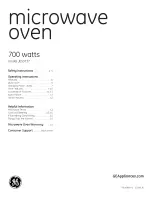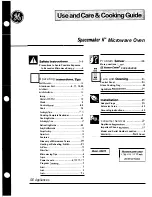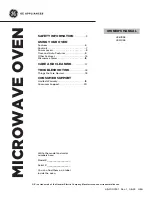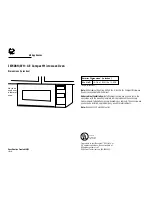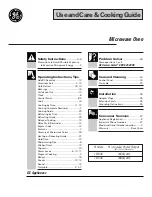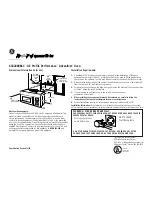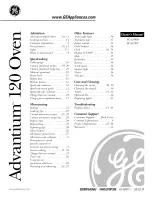
Tested for you in our cooking studio
en
47
Grilling
Here, you can find information on grilling poultry, meat
and fish, as well as toast. You can find the ideal settings
for certain dishes in the settings tables.
Grilling with circo-roasting
Circo-roasting is very well suited to the preparation of
whole poultry and fish, in addition to meat, e.g. roast
pork with crackling.
Poultry
For duck or goose, pierce the skin on the underside of
the wings. This allows the fat to run out.
If using duck breast, score the skin. Do not turn duck
breasts.
When you turn poultry, ensure that the breast side or
the skin side is underneath at first.
Poultry will turn out particularly crispy and brown if you
baste it towards the end of the roasting time with butter,
salted water or orange juice.
Meat
Baste lean meat with fat as required or cover it with
strips of bacon.
Score the rind crosswise. If you turn the joint when
cooking, ensure that the rind is underneath at first.
When the joint is ready, turn off the oven and allow it to
rest for another 10 minutes in the cooking
compartment. This allows the meat juices to be better
distributed. Wrap the joint in aluminium foil if necessary.
The recommended resting time is not included in the
cooking time indicated.
Fish
Fish cooked whole does not have to be turned. Place
the whole fish into the cooking compartment in
swimming position with the dorsal fin facing upwards.
Placing half a potato or a small oven-proof container in
the stomach cavity of the fish will provide stability.
You can tell when the fish is cooked because the dorsal
fin can be removed easily.
Roasting on the wire rack
On the wire rack, poultry and meat will become very
crispy on all sides. Roasting on the wire rack is well
suited for larger poultry or for multiple pieces at the
same time.
Depending on the size and type of the meat, add up to
^
litres of water to the universal pan. Any dripping fat
and meat juices will be caught. You can prepare a
sauce using these meat juices. In addition, less smoke
is generated, and the cooking compartment stays
cleaner.
Slide the universal pan into the oven at the indicated
shelf position with the wire rack attached. Ensure that
the wire rack is correctly positioned on the universal
pan.
Roasting in cookware
It is more convenient to roast and braise meat in
cookware. You can take the joint out of the cooking
compartment more easily in the cookware, and prepare
the sauce in the cookware itself.
Only use cookware which is suitable for use in an oven.
Check whether the cookware fits in the cooking
compartment.
Glass cookware is most suitable. Place hot glass
cookware onto a dry mat after cooking. If the surface is
damp or cold, the glass may crack.
Add in a little liquid if the meat is lean. A covering of
approx.
^
cm depth should be applied to the base of
any glass cookware.
The quantity of liquid is dependent on the type of meat,
the cookware material and also on whether or not a lid
is used. If preparing poultry, meat or fish in an
enamelled or dark metal roasting dish, it will need a
little more liquid than if cooked in glass cookware.
The steam evaporates in the cookware when roasting.
Carefully pour in more liquid if required.
Shiny roasting dishes made from stainless steel or
aluminium reflect heat like a mirror and are therefore
not particularly suitable. The meat cooks more slowly
and will not brown so much. Use a higher temperature
and/or a longer cooking time.
Observe the manufacturer's instructions for your
roasting cookware.
Uncovered cookware
Use a deep roasting tin/dish for roasting meat. Place
the tin/dish onto the wire rack. If you do not have any
suitable cookware, use the universal pan.
Covered cookware
When cooking with covered cookware, the cooking
compartment remains considerably cleaner. Ensure that
the lid fits well and closes properly. Place the cookware
onto the wire rack.
The distance between the meat and the lid must be at
least 3 cm. The meat may rise.
Very hot steam may escape when opening the lid after
cooking. Lift the lid at the rear, so that the hot steam
can escape away from you.
If necessary, braise the meat first by searing it. Add
water, wine, vinegar or a similar liquid to the braising
liquid. A covering approx. 1-2 cm deep should be
applied to the base of the cookware.
The steam evaporates in the cookware when roasting.
Carefully pour in more liquid if required.
Meat can also become crispy in a covered roasting
dish. To do so, use a roasting dish with a glass lid and
set a higher temperature.
The roast looks good but the juices
are too clear and watery.
Next time, use a larger roasting dish and add less liquid if necessary.
The meat gets burned during brais-
ing.
The roasting dish and lid must fit together well and close properly.
Reduce the temperature and add more liquid when braising if necessary.
Содержание B47FS34H0B
Страница 1: ...en INSTRUCTION MANUAL BUILT IN OVEN B47FS34H0B...
Страница 2: ......































